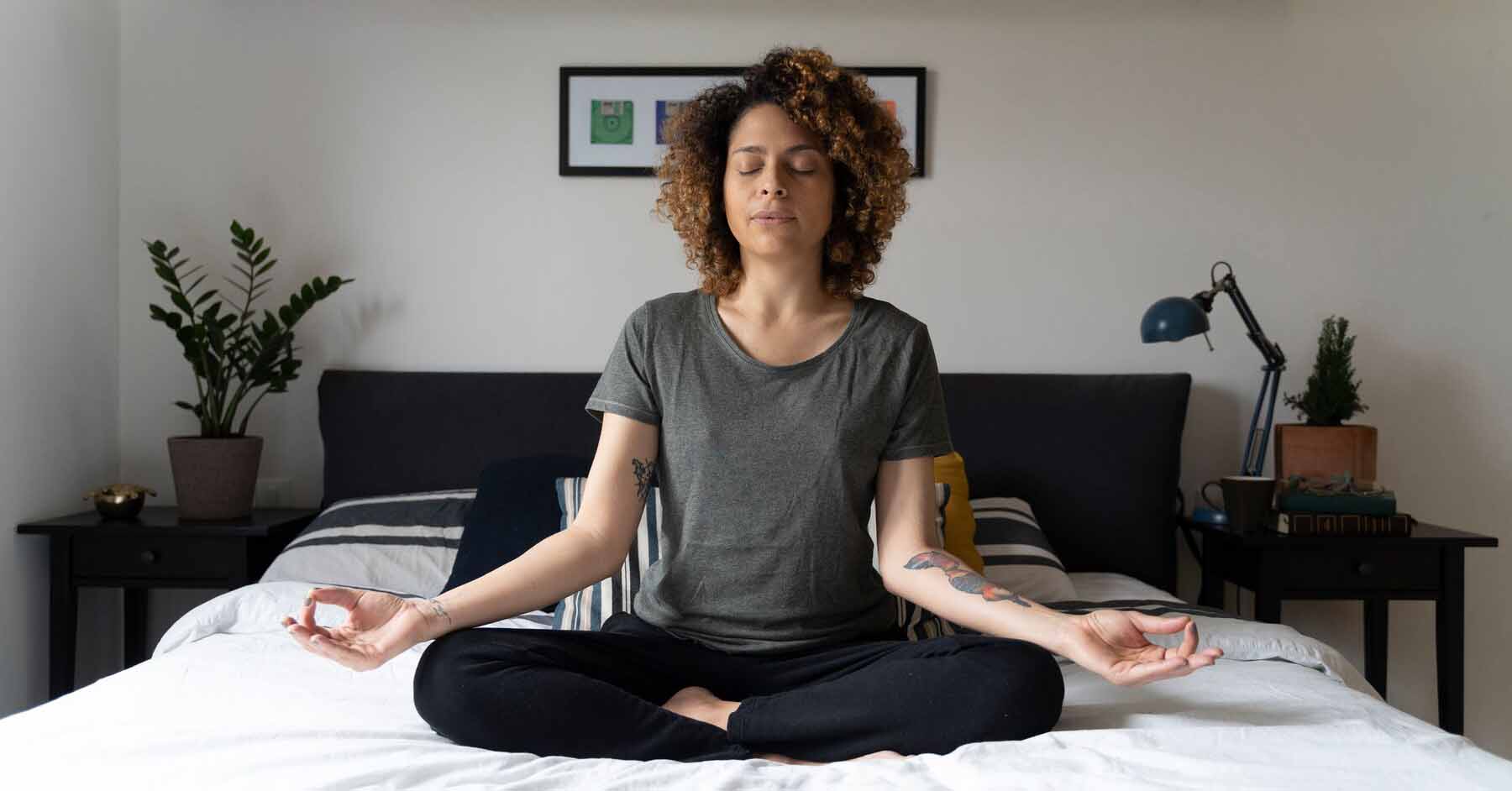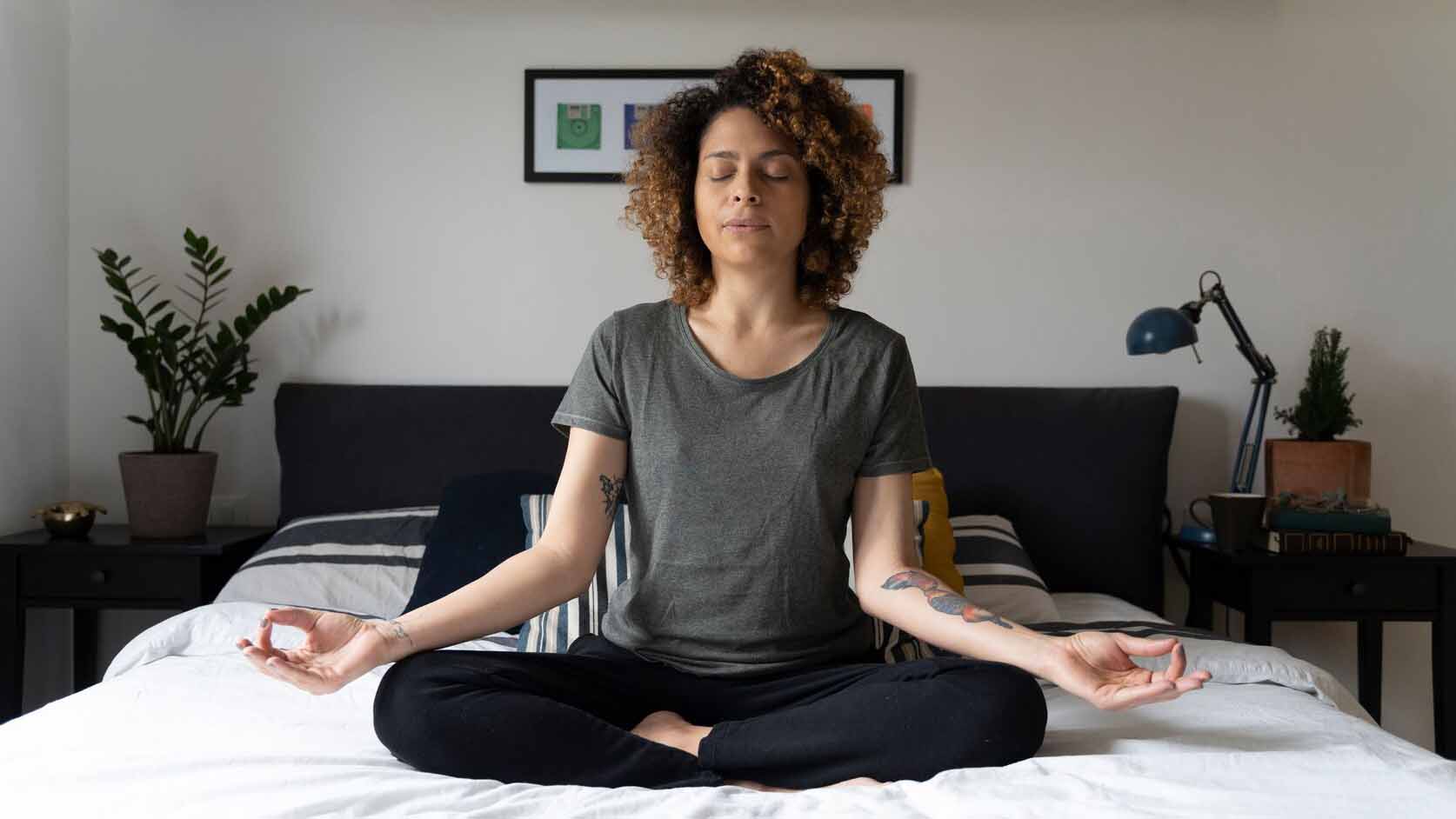8 breathing exercises to reduce stress


Imagine you’ve just driven through a bad storm, given a major work presentation, or had an uncomfortable conversation with a friend. Chances are, you’d benefit from a breathing exercise.
Shallow breathing, as you might have noticed, is a common side effect of stress—it’s why taking a deep breath after a taxing moment can feel like such a relief. But why is this the case, and is it possible to calm yourself when you're stressed with breathing exercises alone?
While there’s still debate around the scientific efficiency of reducing stress with breathing techniques, new research hints that it can’t hurt—and could even help.
Breathing exercises for anxiety and stress
Most people encounter small stressors like traffic, work deadlines, and interpersonal disputes every day: They’re largely unavoidable. However, chronic stress—a persistent state of feeling run down or overwhelmed that is either ignored or not properly dealt with—could contribute to digestive issues, an increased appetite, a weakened immune system, and sleep disruptions.
As it happens, many North Americans report experiencing more stress than they think is healthy, according to a 2019 American Psychological Association survey. And while conventional wisdom points to activities like yoga and meditation for natural stress reduction, deep breathing—which is a part of both those activities—could be the key.
But let's take a step back: Very stressful situations activate a series of physiological changes to prep your body to respond to danger. For instance, both your heartbeat and your breathing quicken to distribute oxygen and energy, which results in quick, shallow breaths that interfere with the diaphragm’s typical range of motion and deliver less oxygen to the lower part of your lungs. This could leave you feeling anxious and short of breath.
Deep breathing doesn’t just provide relief by helping to distribute air into the lower lungs—it also slows the rate at which you breath, says Dr. Darshan Mehta, MD, MPH, medical director of the Benson-Henry Institute and assistant professor of medicine at Harvard Medical School. Research suggests slow breathing exercises can activate your mind-body connection to relax you mentally and physically, according to a 2018 review of 15 existing studies on breathing techniques and their effects, which was published in Frontiers of Human Neuroscience.
Need another reason to take some big breaths? When combined with a relaxation technique such as meditation, deep breathing may ease insomnia as well as (or even better than) pharmaceuticals, according to a research article published in Frontiers in Psychiatry in 2018. While more research is needed, the findings are encouraging, especially since a deep-breathing practice is completely free and can be entirely self-regulated.
How to add breathing techniques into your day
A perk of many breathing techniques: “You can weave them throughout your everyday life,” says Susan Albers PsyD, a clinical psychologist at the Cleveland Clinic and the author of 50 Ways to Soothe Yourself Without Food. “Maybe even between sips of coffee.”
Otherwise, breathing exercises can help you deal with uncomfortable situations, says Kevin Chapman, PhD, HSPP, licensed clinical psychologist and founder and director of the Kentucky Center for Anxiety and Related Disorders (KYCARDS). Most approaches involve simple variations of the same concept: learning how to regulate your body during times of stress.
“The most important part of breathing is that you find an exercise that fits you,” says psychotherapist and anxiety expert Stephanie Sarkis, PhD. It doesn’t matter which method you choose, as long you can stick with it.
The next time you feel yourself tensing up and taking quick, shallow breaths, try one of the self-guided breathing exercises below:
1. Noticing three things
If you need a moment to get centred, Sarkis recommends this quick exercise before taking some deep inhales and exhales:
- Step 1. Wherever you are, name three things you can see in your immediate vicinity.
- Step 2. Then name three things you can hear.
- Step 3. Name three things you can feel.
- Step 4. Shift your focus to your breathing, and notice if it’s calmed down at all.
- Step 5. If desired, continue with the flowers and candles breathing technique (detailed below).
2. The flowers and candles technique
This exercise can be done whether you’re sitting in your car or walking down the street, Sarkis says. All that matters is that you engage your diaphragm:
- Step 1. Inhale through your nose like you’re sniffing a flower.
- Step 2. Exhale through your mouth like you’re blowing out birthday candles.
- Step 3. Repeat as needed, until you feel calmer.
3. Pursed-lip breathing
Pursed-lip breathing is a technique that can both improve breathing patterns and naturally relieve shortness of breath, according to the Cleveland Clinic. It’s a simple technique that can be done in public, but is especially recommended when you’re bending or lifting.
- Step 1. Relax your upper body.
- Step 2. Inhale through your nose for two full seconds.
- Step 3. Purse your lips as though you’re about to whistle.
- Step 4. Exhale slowly (for four seconds) through your pursed lips.
- Step 5. Practice four to five times a day until the breathing pattern becomes second nature.
4. 5-6 breathing
A breathing technique Chapman routinely recommends, “5-6 breathing,” or just “diaphragmatic breathing” can help your body self-regulate in stressful situations after you master it:
- Step 1. Inhale through your nose for a count of one, while thinking the word “one” in your head.
- Step 2. Exhale through your mouth for a count of five, while thinking the word “relax.”
- Step 3. Inhale again for a count of one, thinking the word “two.”
- Step 4. Exhale again for five, thinking the word “relax.”
- Step 5. Repeat until you get to 10 inhales and exhales.
5. 4-7-8 breathing
Coined by Andrew Weil, MD, author and director of the Arizona Center for Integrative Medicine at the University of Arizona, the 4-7-8 breathing method is sometimes touted as a possible sleep aid, and can be practiced when you have a few minutes to yourself to sit or lie down.
- Step 1. Place one hand on your stomach and one on your chest.
- Step 2. Take a deep breath, counting to four as you inhale.
- Step 3. Hold that breath and count to seven.
- Step 4. Count to eight as you exhale. Try to visualize yourself pushing all the air out of your lungs.
- Step 5. Repeat three to seven times, or until you feel calmer.
6. Alternate nostril breathing
A common yoga breathing technique, alternate nostril breathing typically involves breathing through one nostril at a time. Regular practice of alternate nostril breathing may decrease blood pressure and heart rate, and improve cognitive health, according to a review of 44 studies on the technique published in the International Journal of Research in Medical Sciences in 2017.
- Step 1. Sit upright and exhale fully through both nostrils.
- Step 2. Close your right nostril with the thumb of your right hand.
- Step 3. Inhale slowly through the left nostril.
- Step 4. After a complete inhale, close your left nostril with the little and ring fingers of your right hand.
- Step 5. Lift your right thumb off your right nostril and take a full exhale through the right nostril.
- Step 6. Close your right nostril with your right thumb and release your left nostril.
- Step 7: Inhale through your left nostril.
- Step 8. Continue rotating nostrils for up to 15 minutes.
7. The squeegee breath
Using imagery while you take some deep breaths can help you with releasing stress, Albers says. Here's how:
- Step 1. Take a full inhale.
- Step 2. As you exhale, imagine a squeegee going all the way from the top of your head to your toes.
- Step 3. Imagine your stress flowing down like dirty water, rinsing off at your feet.
- Step 4. Inhale again, this time imagining you’re inhaling clean water or clean thoughts.
- Step 5. Repeat two more times.
8. Breathing in a word
Go one step further with imagery using this simple technique from Harvard Medical School:
- Step 1. Sit comfortably and close your eyes.
- Step 2. As you inhale, think of the phrase “breathing in peace and calm.”
- Step 3. As you exhale, think “breathing out tension and anxiety.”
- Step 4. As you think these phrases, imagine stress leaving your body and peace taking its place.
- Step 5. Continue for up to 10 minutes, gradually adding time until you reach 20 minutes.
The upshot: Can breathing help with stress and anxiety?
The research around breathing techniques is still underway. “We haven’t quite gotten to the level of science where we can say why one is better than the other,” Dr. Mehta says, reinforcing that it’s the action that counts, not necessarily the method.
At the end of the day, breathing alone isn’t going to cure all your anxiety or stress, Chapman cautions, but it can provide quick, natural relief when you view it as a mechanism to help you tolerate uncomfortable bodily sensations that arise during stressful moments. To that point: Don’t be discouraged if taking the kind of deep, measured breaths that puff out your stomach feels a little unwieldy at first. “You're trying to change your breathing pattern after many years,” Sarkis says. “It’s okay if it takes time. Let yourself experience breathing without judging yourself.”
Whether you use an app like The Breathing App, a smart device (like your Apple Watch, which has a built-in breathing feature), word repetition, or just your breath, practicing breathing exercises can help for stress management.
--
Jessica DiGiacinto is an associate editor at WW. A health and wellness writer and editor based out of New York, she’s contributed to Popsugar, Bulletproof 360, and Galvanized Media, among other media outlets.
